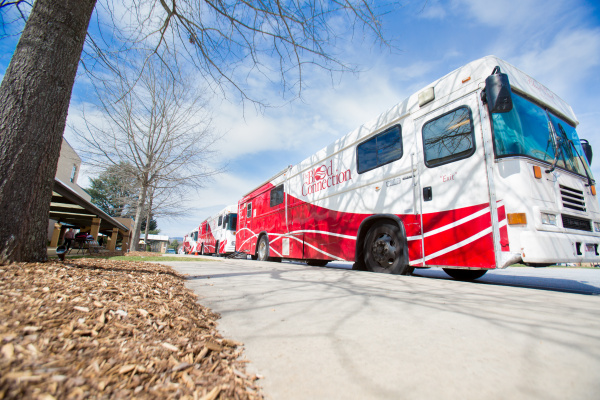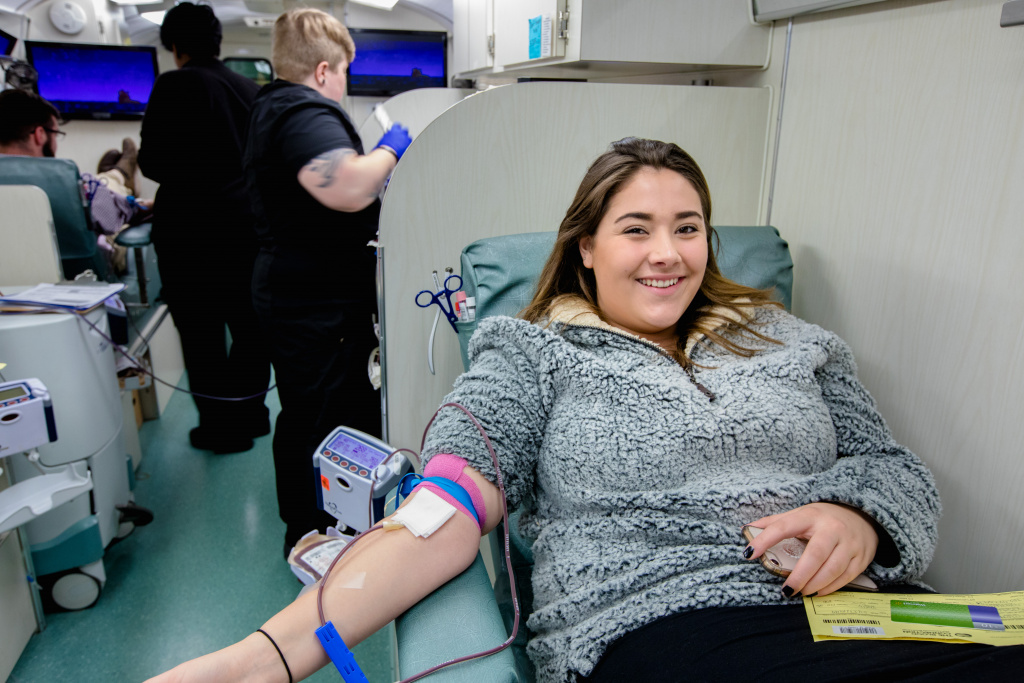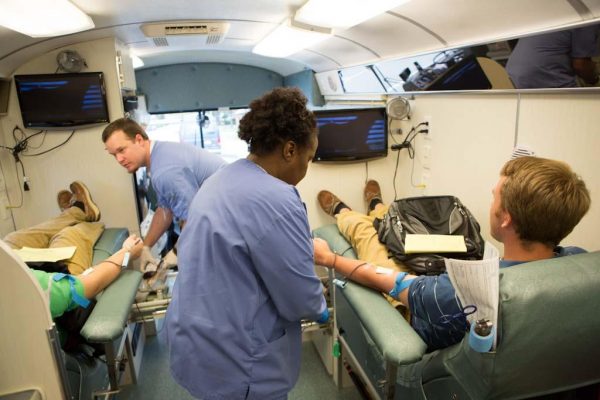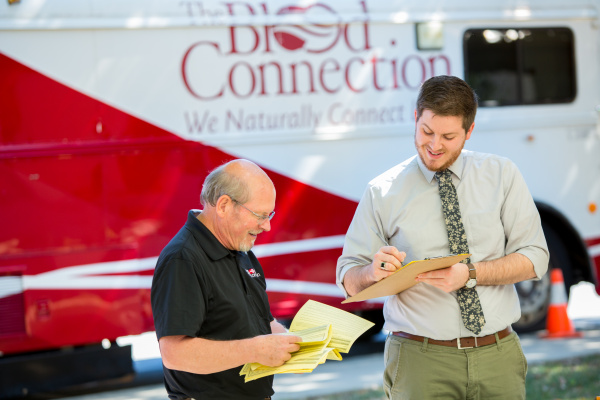Blood drives and blood banks are in the business of saving lives. Platelet, plasma and whole blood transfusions help restore people who lose blood in emergency situations, are recovering from cancer treatments, or have chronic conditions like sickle cell anemia. Human blood is impossible to replicate synthetically, so hospitals depend on blood from a donor to help save patients.
Donating blood is an easy process that takes about 30 minutes—and every donation has the potential to save 3 lives. But people often have reservations about donating blood, up to and including a fear of needles. Sometimes, though, the fear of the new keeps people away: what happens when you sit in the donor chair?
In honor of World Blood Donor Day on June 14, here’s a look at the blood donation process.
1: The Interview
The first step is a chat with a nurse about your medical history. The nurse will ask a short list of questions to figure out if your blood is safe for donation. Current or previous illnesses, medications, prior transfusions, and recent travel outside the United States may prevent you from donating, at least until after a waiting period. You’ll also get a brief physical to make sure you’re healthy enough to give blood that day and sign some consent forms.
The Blood Connection, which serves several SC and NC counties including Greenville, has an online survey and consent form you can fill out before you even show up to donate.
2: The Donation
Now for the fun part! Settle into a comfy chair in the donation center or bus. A technician will prep and insert a needle into your arm, connecting you to the collection bag. There’s no pain after the initial pinprick sensation of the needle going in—your arm might feel a little funny, but it won’t hurt. You’ll have a small stress ball or other squeezable object in the hand of your donating arm. The tech will ask you to squeeze the ball every few seconds to help speed up the drawing process.
All you have to do is sit for 10–15 minutes while the bag collects one pint of blood (that’s 16 fl. oz., or 2 cups). Be sure to bring a book for the wait. (The donation buses that visit BJU usually have a movie playing inside!)
3: The Recovery
A technician will remove the needle and bandage your arm at the entry point. You just lost 1 out of your 8–12 total pints of blood, so you may need a few minutes before you leave to make sure you’re steady on your feet. Donation centers and stations keep snacks and juice on hand for donors, so you’ll have the chance to give yourself a recuperative blood sugar spike.

Blood Connection “Blood Vessels” parked in front of the Alumni Building
Your body will restore the amount of blood plasma you gave in about 24–48 hours and your red blood cell count in 4–8 weeks. If you would like to donate again, you’ll need to wait at least 56 days.
Interested in donating? You can visit one of the area’s donor centers or participate in a blood drive. The Blood Connection’s “Blood Vessel” donation buses visit BJU campus at least once a semester, so keep an eye on our calendar for the next BJU blood drive.








